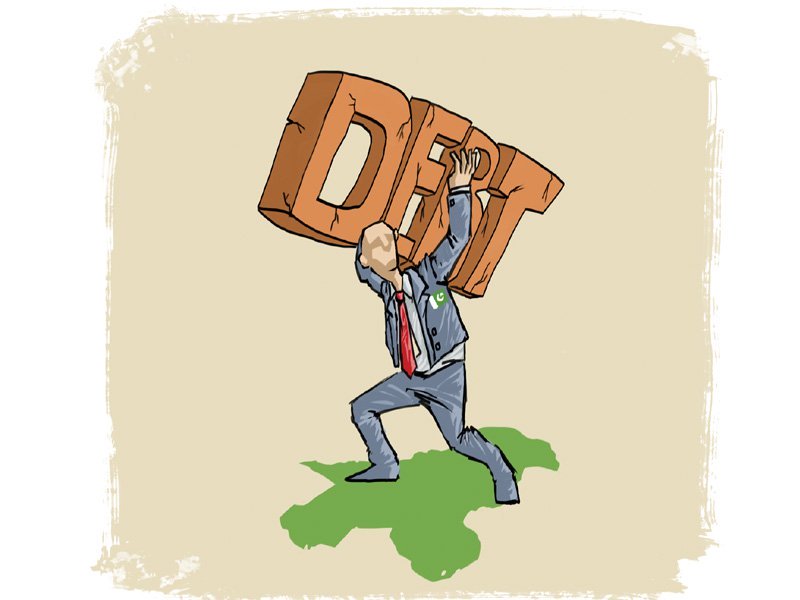
In its annual flagship Fiscal Policy Statement 2019-20, the Ministry of Finance also revealed that the current expenditures remained at 19-year high level in last fiscal year 2018-19. Compared to this, the development spending was the lowest in 11 years in terms of total size of the economy.
The Fiscal Policy Statement has been laid before the National Assembly along with the Debt Policy Statement to fulfil the requirements of Fiscal Responsibility and Debt Limitation Act of 2005. Like the Pakistan Muslim LeagueNawaz (PML-N), the Pakistan Tehreek-e-Insaf (PTI) government too breached the debt reduction limits set in the law.
Dr Ashfaq Hasan Khan, former Director General of Debt and author of the FRDL Act, said that after 2008 every political government breached the debt reduction limits.
The fiscal policy statement showed that the total public debt was recorded at Rs32.7 trillion at end June 2019, resultantly, public debt per capita stood at Rs153,689 at end June 2019.
The Ministry of Finance has worked out per capita debt on the assumption of total population of 212.8 million, assuming 2.4% annual population growth.
In June 2018, the total public debt was Rs24.9 trillion and the Ministry of Finance at that time worked out the per capita debt at Rs120,099. Within one year, there was an increase of 28% or Rs33,590 per capita debt. If we take September 2019 debt level, the per capita data has further increased to over Rs160,000 per person.
The Ministry of Finance said that the total public debt increased by Rs7.8 trillion during FY2018-19, out of which Rs3.7 trillion were borrowed for meeting the federal budget deficit. Another Rs3.1 trillion was added in the public debt due to currency depreciation and Rs927 billion was because of building higher cash balances necessary for effective cash management as the government is committed to zero borrowing from SBP in future, it added.
The Act of the Parliament binds the finance ministry to analyse key macroeconomic indicators, mainly total expenditures, and total net revenue receipts, total fiscal deficit, total federal fiscal deficit excluding foreign grants, total public debt and debt per capita.
The Ministry of Finance’s analysis of the situation depicts a gloomy picture, which suggests that Pakistan has been in a deep debt trap and apparently the government does not have an effective strategy to correct these imbalances.
In fiscal year 2019-20, the government tried to correct the fiscal course by setting the FBR’s revenue collection target at Rs5.5 trillion. However, the first seven months results have remained dismal and
the FBR chairman seems on his way out - the man Prime Minister Imran Khan had trusted to achieve the unrealistic tax collection target of Rs5.5 trillion.
The Ministry of Finance has given a historical perspective of fiscal indicators, pointing out that the fiscal year 201819 indicators were one of the worst in recent years. The real economic growth rate was 3.3% last year, the lowest in six years. The budget deficit at 8.9% of GDP was the highest in over three decades and it was only twice in the past three decades that the deficit was close to 9% of GDP.
Last time, in fiscal year 2011-12, the deficit was equal to 8.8% of GDP.
The total expenditures remained at preceding fiscal year’s level of 21.6% of GDP. But these were the current expenditures that shot up to a 19-year high of 18.4% of total size of the economy, according to the finance ministry. The finance ministry informed the house that the development expenditures slipped to 11 years lowest level of 3.2% of GDP.
Last time, in fiscal year 2008-09, the development expenditures were equal to 3.5% of GDP.
On the revenues front, the total revenues slipped to six years lowest level of 12.7% of GDP. The tax revenues stood at 11.6%. The non-tax revenues slipped to three decades lowest level of 1.1% of total size of national economy. The finance ministry has also shed light on the budget strategy targets, which were also missed in the last fiscal year.
The finance ministry said that in fiscal year 2018-19 key aspects of the budget strategy were containment of fiscal deficit at 4.9% of projected GDP, enhancement of consolidated revenue to Rs6.3 trillion, improvement of tax to GDP ratio to 13.9% and rationalisation of current expenditure to improve efficiency and enhancement of efficiency of the tax machinery by removing anomalies and distortions in the current tax system.
All these targets were missed. Budget deficit remained 82% higher than the target.
The consolidated revenues remained at Rs4.9 trillion or 78% of the target, the tax-to-GDP ratio also remained lower than the target and the current expenditures hit 19 years highest level.
The grim fiscal situation has been fast eating up the already thin revenues and there is little fiscal space left to spend on human and infrastructure development.

































1714024018-0/ModiLara-(1)1714024018-0-270x192.webp)










COMMENTS
Comments are moderated and generally will be posted if they are on-topic and not abusive.
For more information, please see our Comments FAQ